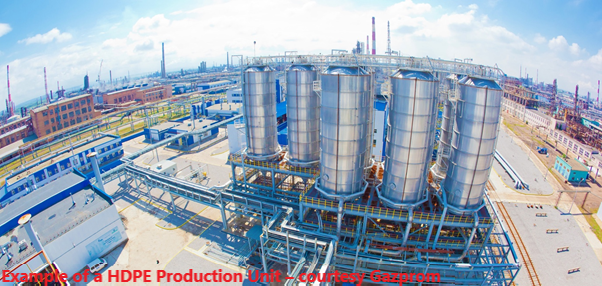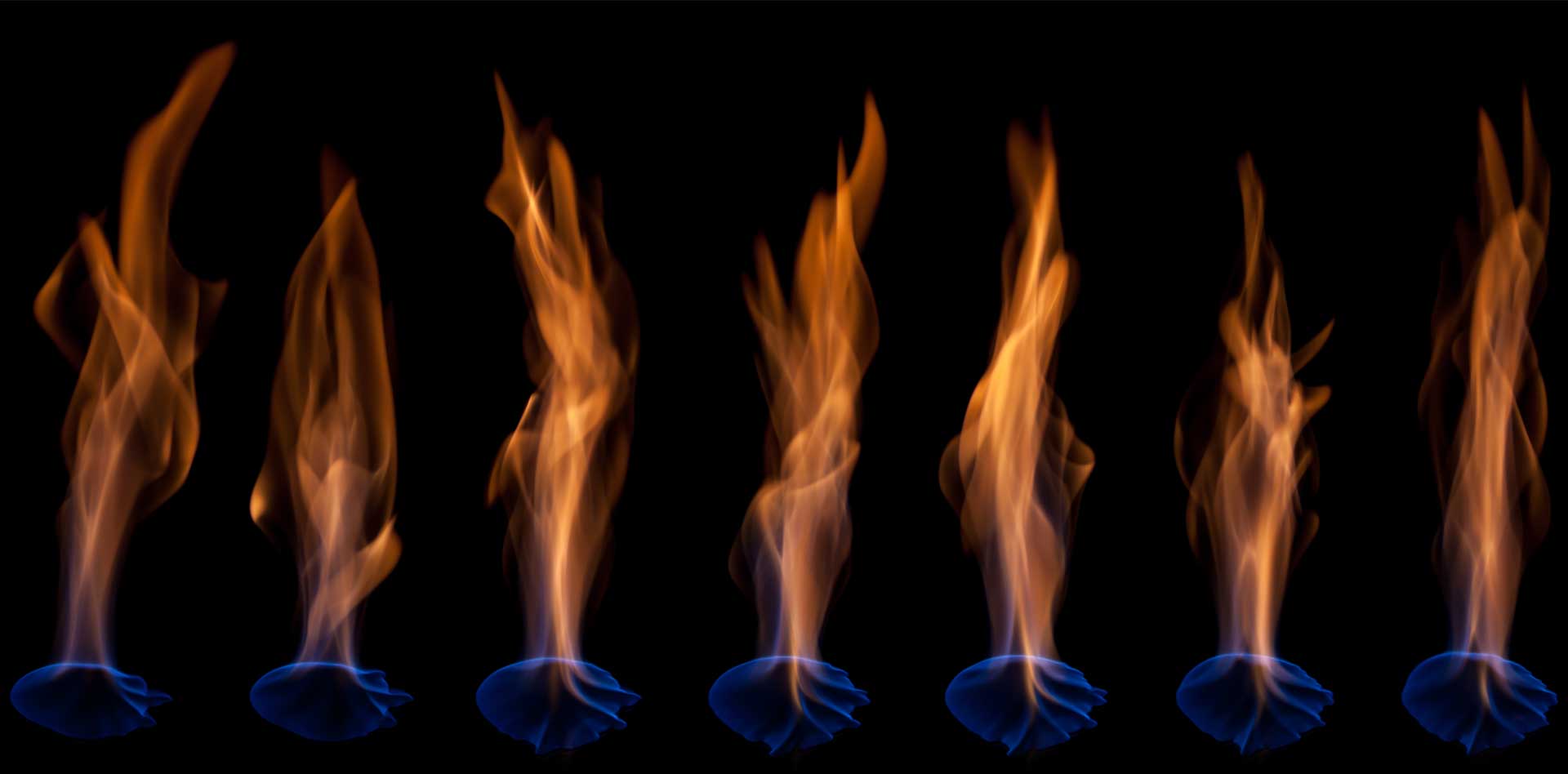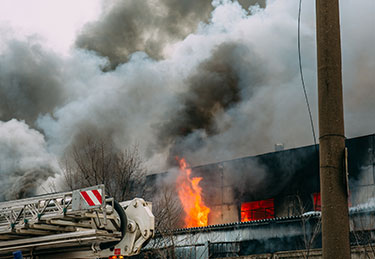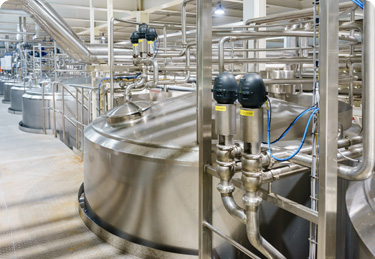Search
So, What Exactly Exploded? Hybrid Mixtures

In this article, we look at two recent explosions at Polyethylene and Polypropylene manufacturing facilities and discuss what happens when flammable gases and powders combine. One of the explosions caused significant plant damage; the other led to the death of 6 workers and injury to 11 others.
The explosion characteristics of hybrid mixtures cannot be readily calculated – and so we undertake laboratory testing for our clients so that proper design of explosion protection measures is possible – and adequate explosion prevention measures are in place – to ensure safe manufacturing.
In one case, it was maintenance activity that initiated the explosion. In the other, case it was a discharge of static electricity.
Explosion 1: High Density Polyethylene – HDPE
Workers were tasked to install an access manway on the side of an aluminum silo used for the storage of High-Density Polyethylene (HDPE) [Ref1]. This task involved cutting and welding operations from the outside of the silo – some 30m above ground level. Reports suggested that a fire and explosion occurred during the welding operation, ejecting workers from their welding platform to their death below. The explosion did not stop there. In total 3 silos were destroyed, and a number of nearby factories were damaged by the blast.
This first explosion occurred in South Korea.
What exploded? It was reported that there was HDPE dust collected on the inside of the silo walls [ref 1]. It is evident that tools used to create the opening in the silo would likely have dislodged this dust and therefore created (perhaps small) HDPE dust clouds inside the silo. HDPE dust is a known dust explosion risk, typically with St1 explosion severity rating – i.e. explosible but in the lower severity category. Welding, of course, produces substantial heat as well as welding ‘sparks’, either of which can become a source of ignition.
The facts suggest that a primary explosion in the silo propagated to create further explosions as dust on surfaces and bag filters was raised and ignited, generating perhaps 2nd and third pressure wave explosions through the plant. But although the dust explosion scenario fits well with observations, it does not necessarily provide the whole story.
Stored HDPE will liberate monomer hydrocarbons (e.g., ethylene) at a decreasing rate after manufacture. The diffusion of residual monomers from HDPE pellets depends on:
- The residual monomer content in the pellets: The higher the residual monomer content of the pellets, the greater the quantity of residual monomers which is emitted. If errors occur during the manufacturing process, the residual monomer content in the pellets can increase.
- The temperature of the pellets: An increase in temperature causes the quantity of degassed residual monomers to increase.
- The pellet diameter: The smaller the pellet, the greater the quantity of residual monomers which is degassed at the beginning of the diffusion process.
Indeed, there is often a minimum recommended ‘wait time’ after manufacture, perhaps a week or so, to allow for degassing and removal of these dangerous gases from the silos. The HDPE inside the silo in South Korea had been produced just 3 days before the explosion.
It would have been mandated that flammable gas concentrations were measured inside the silos before allowing hot work such as cutting & welding to take place. The plant in question was used to making such measurements but there were various accounts about when, where, who, how, measurements were made [ref 2]. A potential breakdown of process safety management systems is apparent.
So, what exactly did explode inside the silo? In all probability the explosion was a hybrid mixture of both hydrocarbon gas and fine HDPE dust, with the relative concentrations of each varying in different parts of the silo system. Whatever the relative concentration of each, it is important to understand that in a hybrid mixture:
- Explosion violence may be stronger than the explosible characteristics of the individual components might suggest.
- Even if both components of the hybrid mixture are below their respective lower flammable limits (LFL), the hybrid mixture may still be flammable.
- The minimum ignition energy of the dust cloud will likely be lowered by the presence of a flammable gas, even if the gas concentration is below its LFL.
These features of HDPE dust-hydrocarbon gas mixtures can be generalized to some extent to learn lessons from this tragic explosion: Explosions of hybrid mixtures of flammable gases and dusts will most probably be stronger and more easily ignited than the explosion properties of the dust cloud on its own. In practice, explosion vent sizes may need to be bigger than those for a dust explosion alone, and relatively weak ignition sources (such as certain electrostatic discharge types or even impact sparks) may be capable of igniting the hybrid mixture, but not the dust alone. In the case described above, it appears as though there were process safety management issues relating to ‘hot work’ procedures (dust deposits should have been removed before beginning work) and measurement/monitoring of flammable gases, but knowledge of flammability characteristics of the hybrid mixture are important to ensure proper explosion protection and prevention measures are taken.
Explosion 2: Polypropylene – PP
The second fire and explosion we describe also occurred in South Korea just 3 years ago, although this time there was plant damage but fortunately no injuries. Once again, a flammable gas was involved alongside a plastic dust.
It was reported [Ref1] that the pneumatic conveying of polypropylene (PP) pellets through pipework had generated high levels of static electricity on the pellets as a result of tribo-electrification (contact charging). Triboelectrification of this type is commonplace whenever powders in general are pneumatically conveyed – but this rarely leads to explosion. However, in this specific case, the consequence of this charge generation would be an explosion inside a silo with subsequent polypropylene silo fire. The particular characteristics of polypropylene (pellet form and high electrical resistivity) can lead to various types of electrostatic discharges, but we draw your attention to Cone discharges (also known as bulking brush discharges) that can and do occur across the surface of bulking pellets. Cone discharges are a very specific type of electrostatic discharge which are limited in energy. Various attempts have been made by experimenters over the years to quantify the maximum energy these discharges can attain. What we know is that bulking brush discharges:
- Are more likely with pellets than fine material (i.e., there is a particle size effect),
- Can occur when the powder pellet resistivity is high (greater than about 1010 ohm-m),
- Are more likely with increasing fill rates,
- Seem from experience not to be capable of igniting dusts having Minimum Ignition Energies (MIEs) greater than 25 mJ. However, such discharges have been attributed to causing industrial explosions of dusts having MIEs less than 25 mJ.
What exploded? Polypropylene pellets tend to be less inclined to produce dust than many materials when pneumatically conveyed, although the silo system was fitted with means to remove fine PP dust; evidence of at least some dust generation. The minimum ignition energy of polypropylene dusts can vary depending on particle size, but MIE values measured in our own dust explosion laboratories over the years have tended to be quite high; 50 mJ, 100 mJ, or 1000 mJ is not unusual. However, the MIE of degassing gases such as propylene and ethylene are 0.28 mJ and 0.07 mJ respectively [ref3].
So, when you have a dust cloud with an MIE of, say 50 mJ and begin to add a gas, the MIE of the hybrid mixture starts to fall. It will eventually reach the critical MIE for bulking brush discharges to become dangerous.
The reported explosion in South Korea had silos which were fitted with instruments to measure the concentration of flammable gasses, but once again, there were uncertainties over the accuracy and reliability of the readings. Was this another example of failures in safety management systems, where checks and calibrations are required to prove operation and functionality of instrumentation?
Returning to the theme of this article, though, we remind that explosions of hybrid mixtures of flammable gases and dusts will most probably be stronger and more easily ignited than the explosion properties of the dust cloud component might suggest. The first step in solving a hybrid mixture explosion hazard is to understand the flammability of the hybrid mixture itself. This begins with laboratory testing.
If you have any questions about hybrid mixtures on your facility – and how the safety case (explosions prevention and protection) may be affected by such mixtures, please contact us on 609-455-0001 or email us at [email protected].
Ref 1: Case Studies for Dangerous Dust Explosions in South Korea during Recent Years: Pak et al. Sustainability. MDPI. September 2019
Ref 2: https://koreajoongangdaily.joins.com/2013/03/15/socialAffairs/Yeosu-chemical-plant-blast-leaves-6-dead-11-injured/2968654.html
Ref 3: Babrauskak,V. (2003) Ignition Handbook, Fire Science Publishers

Get in touch
To learn more about our expertise and services in dust explosion prevention & mitigation, call us at +1 609 455 0001 or email us at [email protected] today.
We also offer tailored virtual and in-company process safety training programs on Dust Explosions, Static Electricity and HAC (Hazardous Area Classification) and more. Find further information here.










